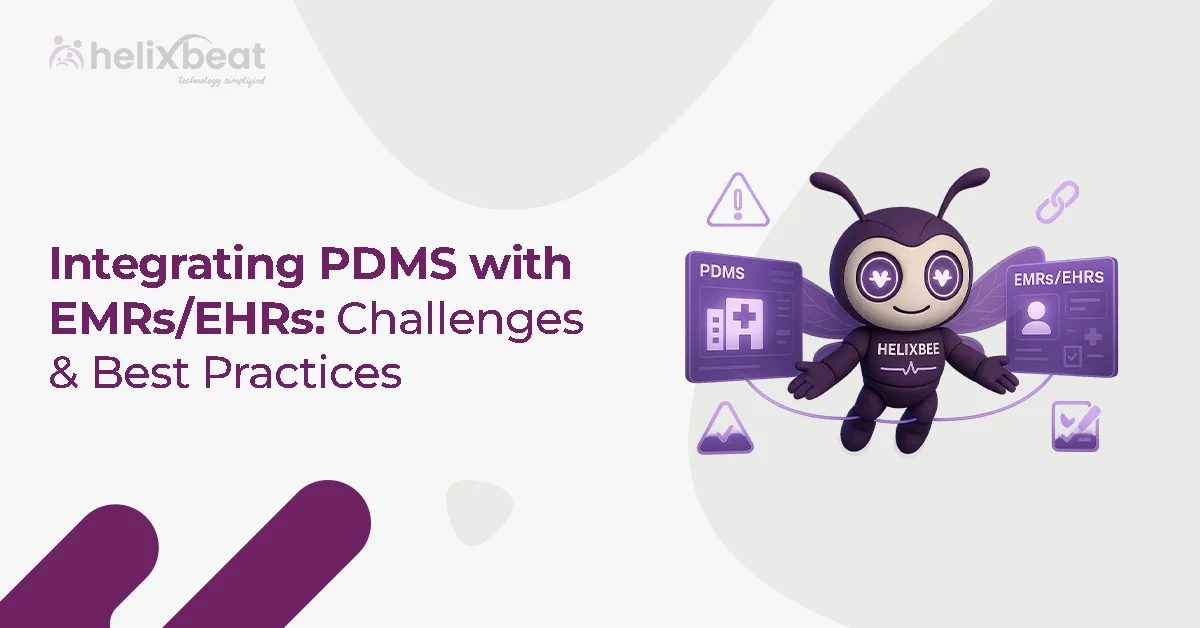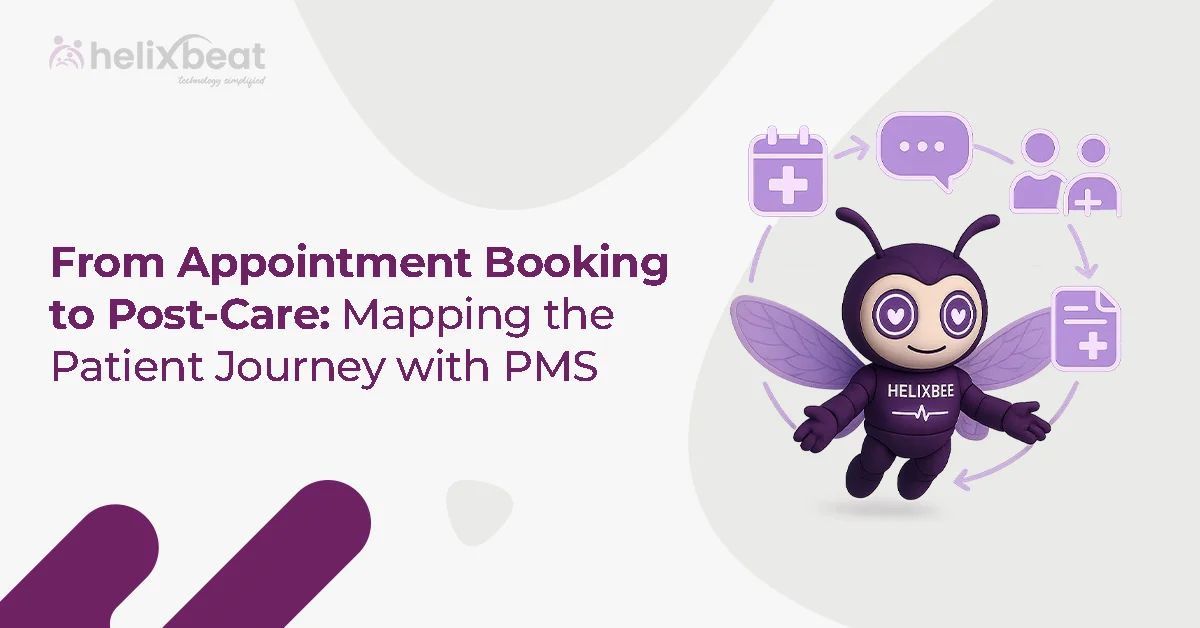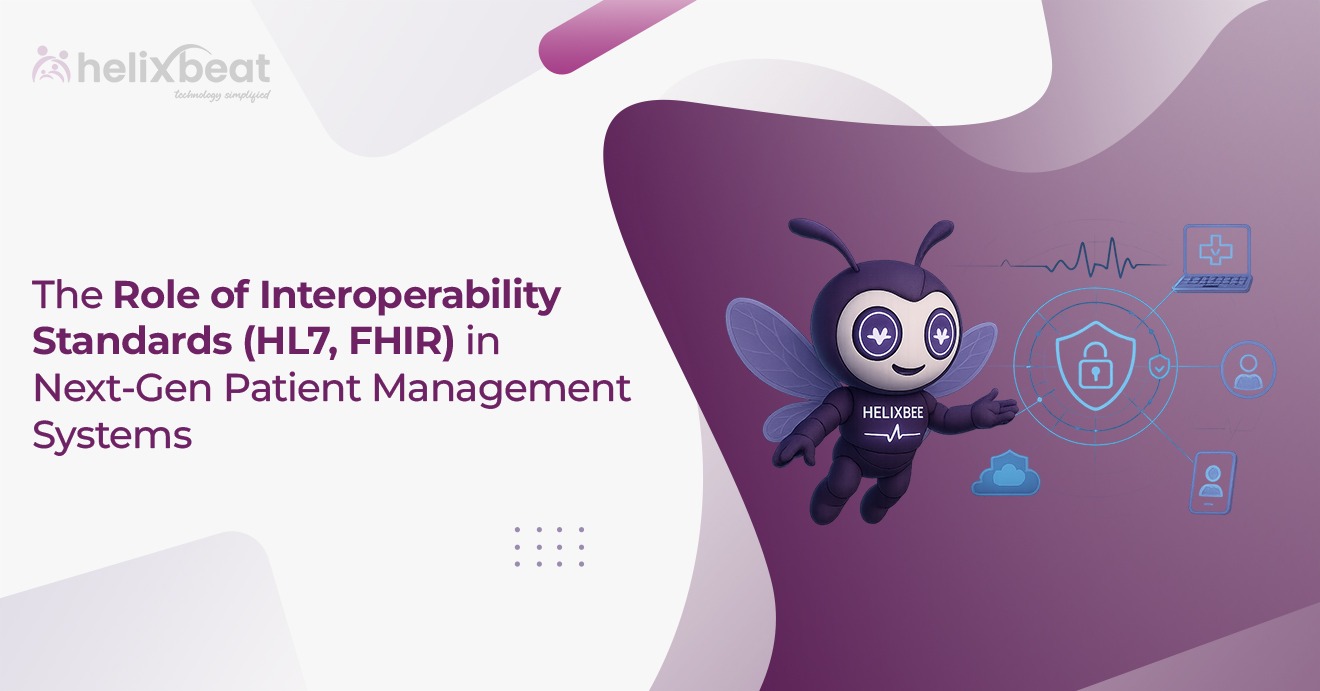The way people approach healthcare today is changing faster than ever. From online searches to reviews, patients now have more choices—and higher expectations—when it comes to selecting a provider. For clinics and hospitals, standing out in 2025 isn’t just about offering quality care; it’s about connecting with patients in meaningful ways and making it easy for them to choose you. In this blog, we’ll dive into seven smart patient acquisition strategies that can help you attract more patients, build trust, and grow your practice in an increasingly digital world.
Table of Contents
1. Optimize for Local SEO and Voice Search
With over 60% of health searches happening on mobile devices, local SEO remains critical to any patient acquisition strategy. To attract new patients, providers must focus on:
- Optimizing their Google Business Profile with accurate contact details, services, and patient reviews.
- Using long-tail keywords like “best dentist near me” or “pediatrician open on weekends.”
- Structuring content for voice search queries as more users rely on digital assistants like Siri and Alexa.
- Securing local backlinks from reputable sources such as community organizations and healthcare directories.
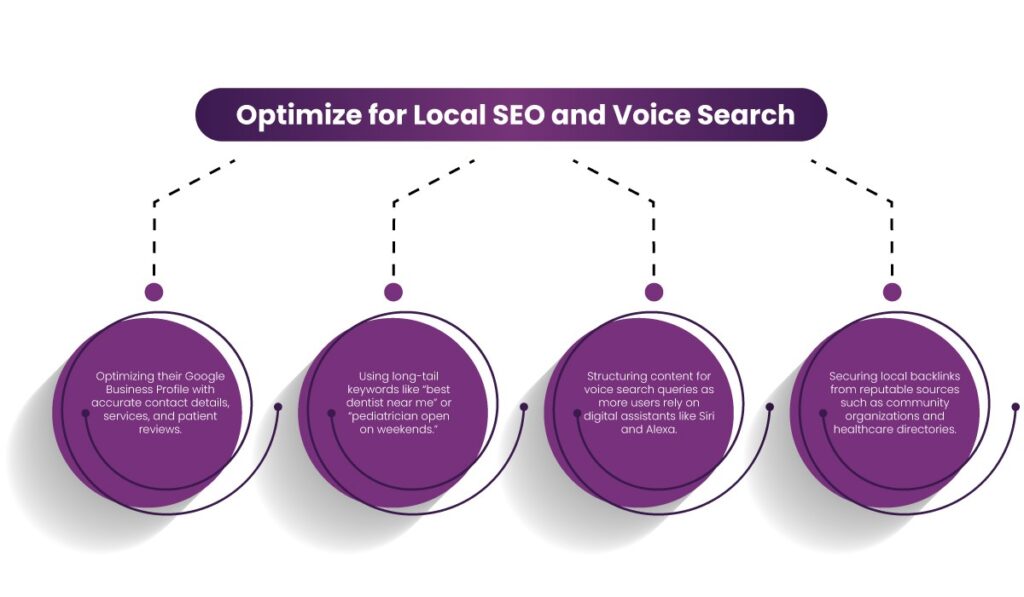
By making it easy for potential patients to find and trust your practice online, healthcare providers can significantly increase appointment bookings.
2. Develop a Strong Social Media Presence
Social media continues to be a powerful tool for reaching new patients, with platforms like Instagram, Facebook, and LinkedIn playing a major role in healthcare marketing. Here’s how you can use social media as part of your patient acquisition strategy:
- Share educational content that resonates with your target audience, such as wellness tips, FAQs, and patient success stories.
- Host live Q&A sessions to discuss common health concerns in real-time.
- Encourage user-generated content, like patient testimonials and before-and-after treatment visuals.
- Use targeted ads to reach specific demographics and drive new patient inquiries.
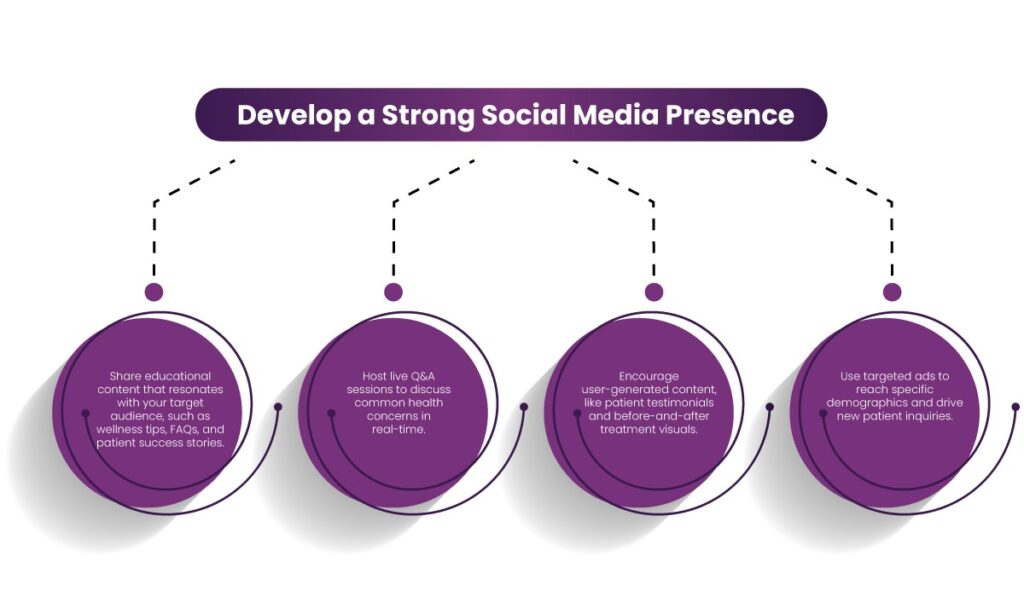
By actively engaging with potential patients online, healthcare providers can boost credibility and increase the likelihood of appointment conversions.
3. Invest in Telehealth Services and Digital Convenience
Telehealth has shifted from being a temporary necessity to a preferred mode of care for many patients. By offering virtual consultations, providers can:
- Attract busy professionals and individuals in remote locations.
- Reduce no-show rates by making it more convenient for patients to seek care.
- Improve accessibility for those with mobility challenges or transportation limitations.
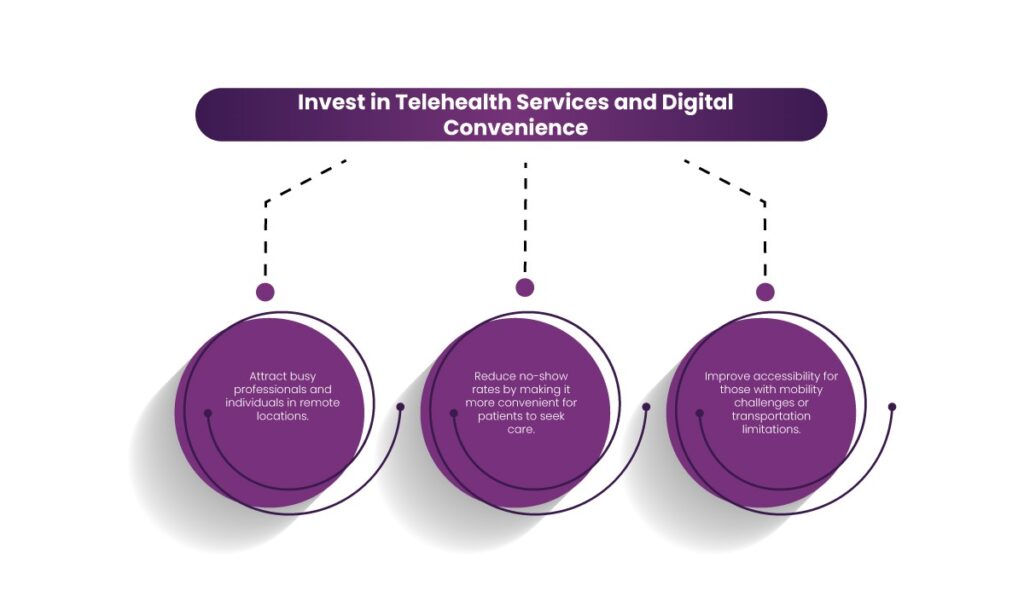
Additionally, integrating digital conveniences like online appointment booking, e-prescriptions, and automated billing further enhances patient satisfaction and increases acquisition rates.
4. Strengthen Reputation Management and Patient Reviews
Online reviews play a critical role in influencing potential patients. Studies show that over 80% of people trust online reviews as much as personal recommendations. Therefore, an effective patient acquisition strategy must include a strong focus on online reputation. To build a stellar online reputation:
- Encourage satisfied patients to leave reviews on platforms like Google, Yelp, Healthgrades, etc.
- Respond to both positive and negative reviews constructively and professionally.
- Highlight patient testimonials on your social media and website.
- Use patient management tools to monitor and address patient feedback proactively.
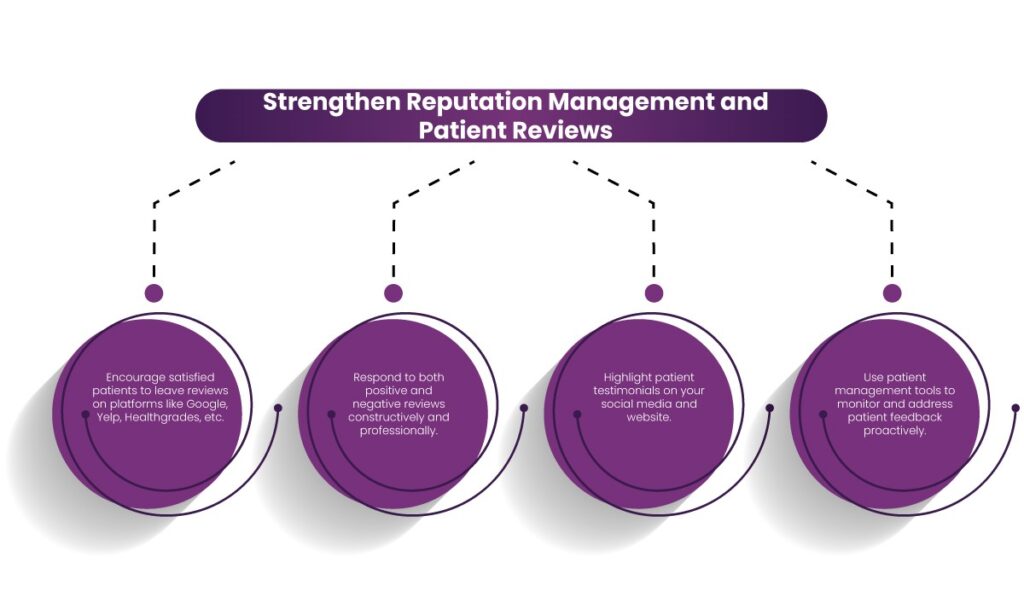
A strong online reputation builds trust, increases visibility, and enhances patient acquisition efforts.
5. Implement Data-Driven Marketing Campaigns
Healthcare marketing is becoming more sophisticated with the use of big data analytics. By leveraging patient insights, healthcare providers can:
- Target the right audience with highly personalized ads.
- Improve ROI by focusing on effective marketing channels.
- Analyze patient engagement trends to refine marketing strategies and optimize their patient acquisition strategy.
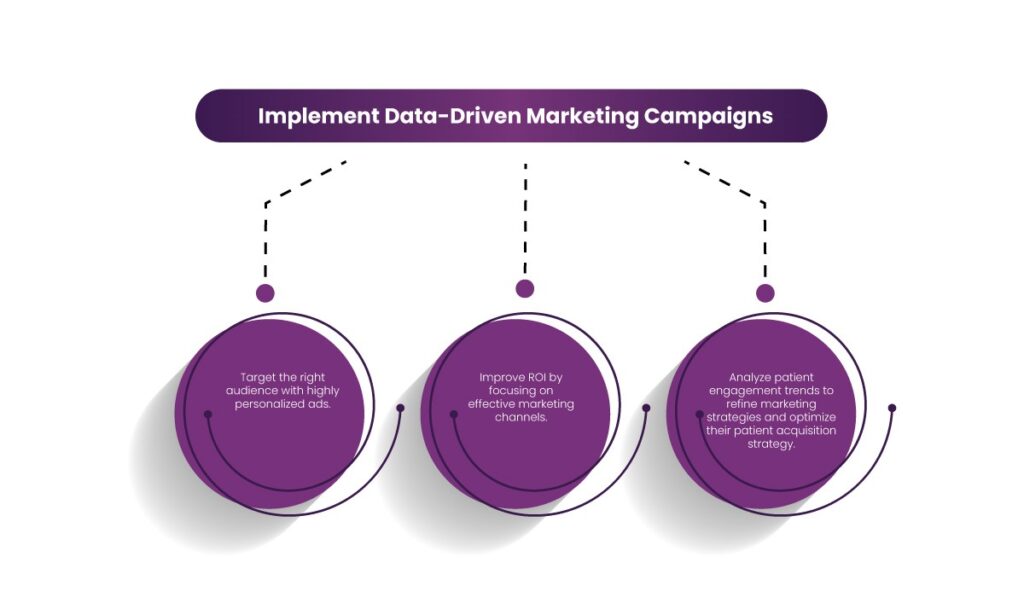
A data-driven approach allows healthcare providers to reach the right patients at the right time with the right message.
6. Establish Strategic Partnerships and Community Engagement
Collaborating with local businesses, gyms, schools, and wellness centers can be an effective patient acquisition strategy. Consider:
- Partnering with fitness centers to offer joint health programs or free health screenings.
- Hosting educational seminars at local community events.
- Offering corporate wellness programs to attract working professionals.
- Engaging in philanthropic initiatives, such as free check-up camps, which help build goodwill and brand awareness.
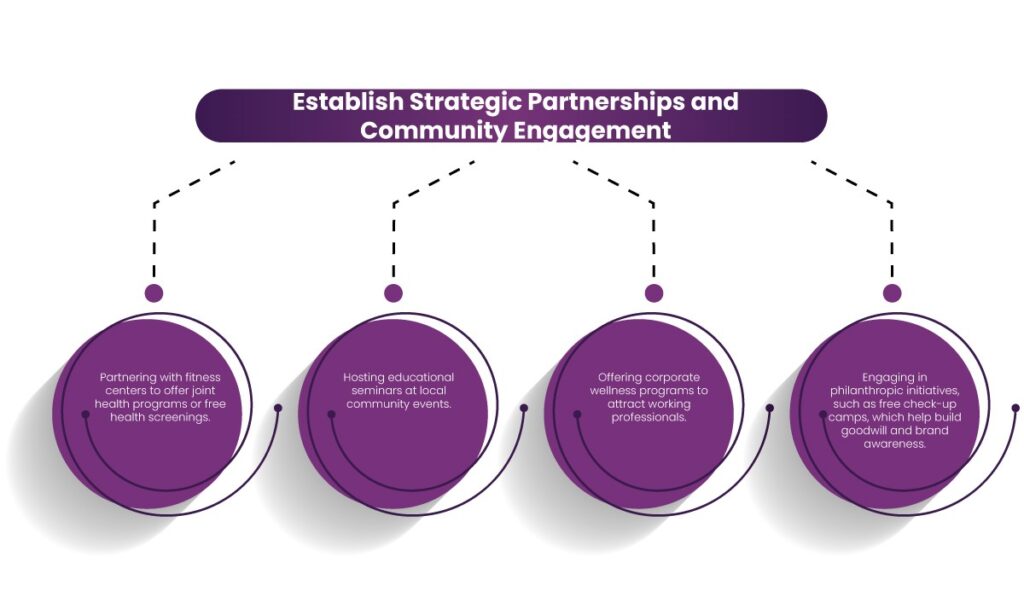
Community involvement not only increases brand recognition but also positions your practice as a trusted healthcare provider.
7. Adopt a Patient-Centric Approach to Care
Finally, an effective patient acquisition strategy is not just about marketing—it’s about providing a seamless and patient-first experience. To do this:
- Offer shorter wait times and easy appointment scheduling.
- Improve the in-clinic experience with modern facilities and compassionate staff.
- Follow up with patients post-visit to show continued care and engagement.
- Listen to patient feedback and continuously refine the patient journey.

A practice that prioritizes patient satisfaction naturally attracts more referrals and retains more patients.
How PULSE Helps Providers Optimize Their Patient Acquisition Strategy
PULSE helps healthcare providers establish a strong online presence with a structured, verified profile. Providers can list their specializations, affiliations, and contact details, and integrate Electronic Medical Records (EMR) for a seamless experience.
Besides, the multi-location management feature for providers helps patients easily find and book appointments at their preferred area, while telehealth integration and automated follow-ups improve patient engagement. Therefore, by offering a comprehensive, searchable profile, PULSE makes it easier for patients to connect with the right provider.
Final Thoughts
As healthcare continues to evolve in 2025, providers must adopt innovative patient acquisition strategies to remain competitive. From optimizing for local SEO to building a strong social media presence and prioritizing reputation management, the key lies in creating a seamless, engaging, and patient-centric experience.
By implementing these strategies, healthcare providers can attract more patients, strengthen their reputation, and drive sustainable growth in an increasingly digital world.
FAQs
1. What is a patient acquisition strategy, and why is it important in 2025?
A patient acquisition strategy refers to the methods healthcare providers use to attract and retain new patients. With increasing competition and digital transformation, adopting innovative approaches helps providers grow their practice efficiently.
2. How does telehealth contribute to patient acquisition?
Telehealth services make healthcare more accessible by offering virtual consultations, reducing no-shows, and catering to patients who prefer remote care, ultimately expanding a provider’s reach.
3. Why should healthcare providers focus on social media for patient acquisition?
Social media allows providers to engage directly with potential patients, build trust through educational content, share patient testimonials, and run targeted outreach campaigns to attract new patients.
4. How does PULSE help healthcare providers optimize their patient acquisition strategy?
PULSE enhances online visibility through structured profiles, verified credentials, EMR integration, multi-location management, and telehealth services, making it easier for patients to find and connect with providers.
5. What is the most effective way to retain patients after acquisition?
Retaining patients requires continuous engagement, such as follow-up messages, telehealth support, personalized care plans, and a seamless appointment experience to encourage long-term loyalty.
6. What are the benefits of multi-location management for patient acquisition?
Multi-location management allows patients to find and book appointments at the most convenient clinic, thus improving accessibility and reducing scheduling conflicts.
7. What role do online reviews play in a patient acquisition strategy?
Positive reviews build credibility and influence a potential patient’s decision. Therefore, responding to reviews and encouraging satisfied patients to share their experiences can boost patient trust and appointment bookings.
8. How can strategic partnerships enhance patient acquisition?
Collaborations with local businesses, schools, and wellness centers expand outreach, create referral opportunities, and position a healthcare provider as a trusted community resource.












